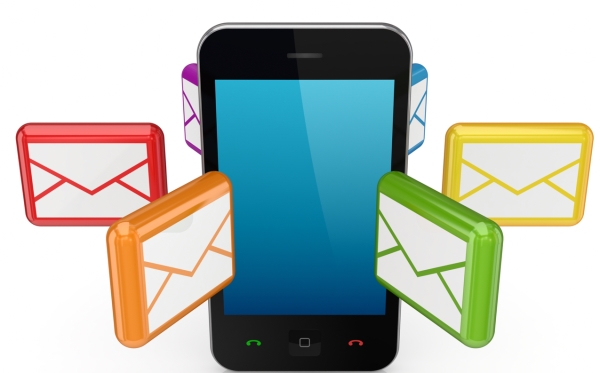The responsive email design is a new concept that revolutionizes the way to create messages.
In the early days of email, most users viewed their messages on the same type of equipment. Whether they were using a standard desktop or a portable laptop, the interface was pretty much the same. That meant that marketers and others could send out their messages without worrying that recipients would have difficulty reading the text or seeing the graphics.
That has all changed with the introduction of smart phones, tablet computers and other portable devices. These days, when you send an email to a client or a potential customer, you have no way of knowing if that person will be reading your message on a work computer, a laptop, a phone, a tablet or some other device.
The fact that we use so many different devices to connect to the Internet and read email creates a big challenge for email marketers. Not only to email marketers need to create compelling messages and eye-catching taglines – now they also need to create messages that can adapt and change according to the type of device the recipient is using.
What is Responsive Email Design?
This is what responsive email design is all about. With responsive email design, the message is designed to change and adapt according to a number of factors, including the size and resolution of the computer screen and the type of device where it is being viewed.
This adaptability is important, especially with so many of us viewing emails on small smart phone and tablet screens. An email that looks great on a desktop computer screen might not be so easy to read on a tiny phone display. By using responsive email design, marketers can make sure their messages look great no matter what kind of device the customer is using.
What Are the Limitations?
While responsive email design is a good concept and shows great promise, there are a number of limitations that marketers need to be aware of. Understanding the limitations of responsive email design is one way to avoid mistakes, but it is also a good way to maximize the effectiveness of each campaign.
If you often include tables in your email messages, you should exercise caution when applying responsive email design concepts. Tables can be particularly hard to read on small screens, so the data may not be as useful as you intended it to be. As a result, marketers may want to replace large data tables with visual elements that are easier to read and translate – like pie charts and small graphs.
Why Should Marketers Consider Responsive Email Design?
It is easy to see why marketers should learn as much as they can about responsive email design. As more and more users surf the web and get their email on non-traditional computing devices, it will become even more important to format messages properly and ensure that all users will be able to read them.
Each new generation of smart phone and tablet PC presents its own set of challenges for users and marketers alike. Staying ahead of the curve and understanding the newest trends in the industry allows savvy marketers to gain market share and stay on step ahead of the competition.
